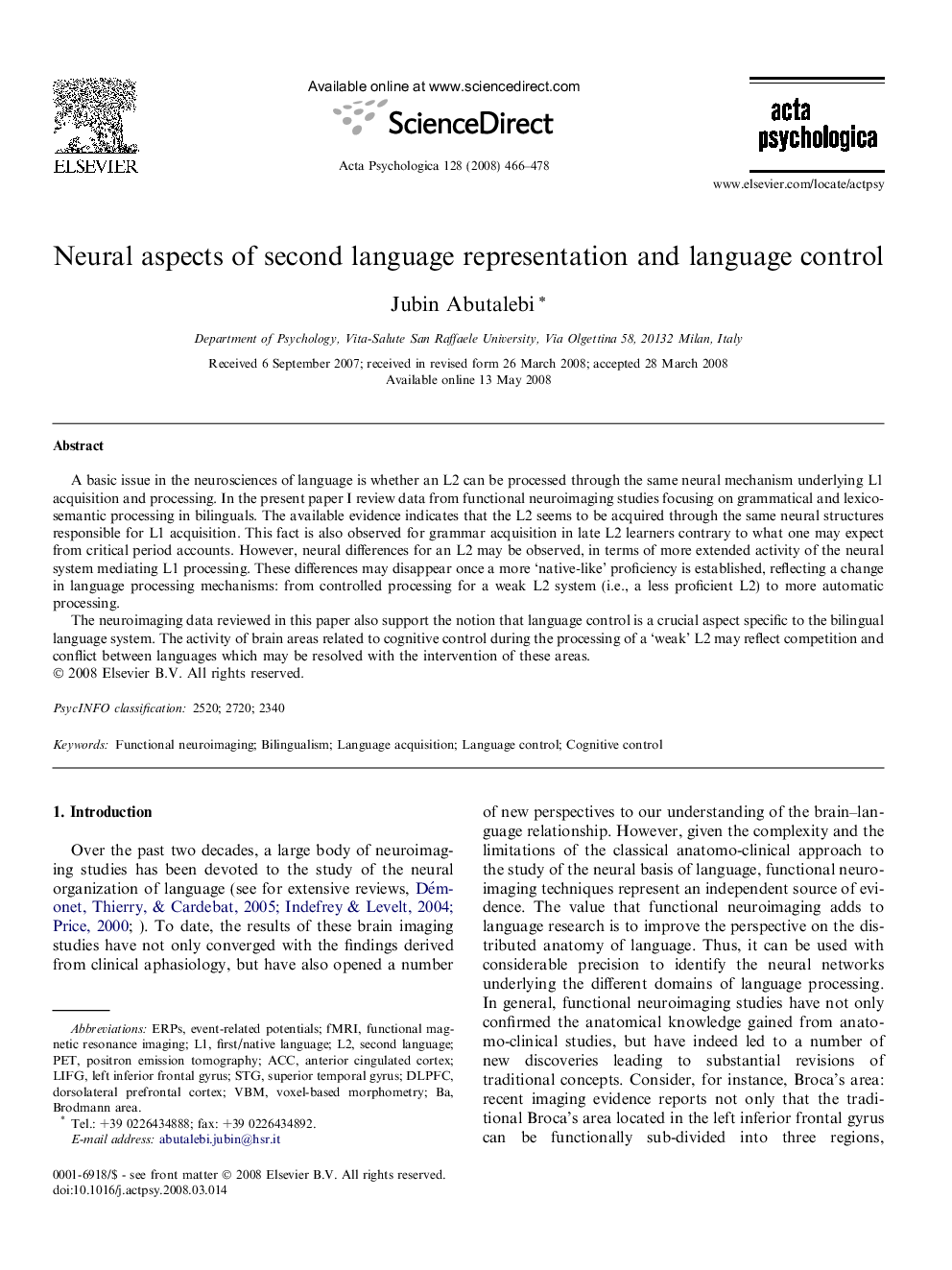| Article ID | Journal | Published Year | Pages | File Type |
|---|---|---|---|---|
| 920579 | Acta Psychologica | 2008 | 13 Pages |
A basic issue in the neurosciences of language is whether an L2 can be processed through the same neural mechanism underlying L1 acquisition and processing. In the present paper I review data from functional neuroimaging studies focusing on grammatical and lexico-semantic processing in bilinguals. The available evidence indicates that the L2 seems to be acquired through the same neural structures responsible for L1 acquisition. This fact is also observed for grammar acquisition in late L2 learners contrary to what one may expect from critical period accounts. However, neural differences for an L2 may be observed, in terms of more extended activity of the neural system mediating L1 processing. These differences may disappear once a more ‘native-like’ proficiency is established, reflecting a change in language processing mechanisms: from controlled processing for a weak L2 system (i.e., a less proficient L2) to more automatic processing.The neuroimaging data reviewed in this paper also support the notion that language control is a crucial aspect specific to the bilingual language system. The activity of brain areas related to cognitive control during the processing of a ‘weak’ L2 may reflect competition and conflict between languages which may be resolved with the intervention of these areas.
